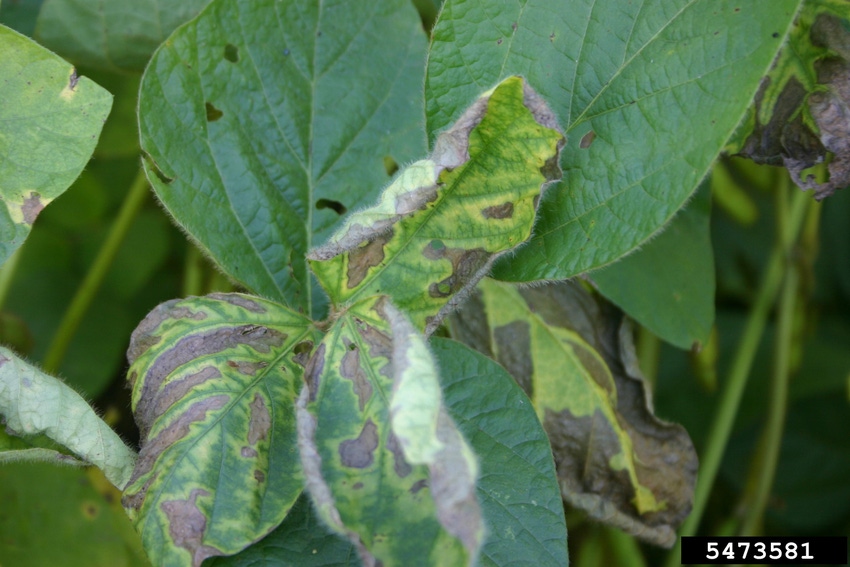
The widespread, late season appearance of diseases like sudden death syndrome (SDS) and white mold had soybean farmers asking many questions.
Shawn Conley says the environment drove the uptick in white mold and sudden death syndrome. The University of Wisconsin Soybean and Wheat Extension Specialist says the SDS outbreak was not a complete surprise. A cold spell not long after planting resulted in cool wet soils, which ends in SDS. But a big contributing factor to the SDS outbreaks was soil compaction. Conley says the ground was wet in many states when the corn came off last year resulting in compaction. This helped the development of SDS.
Make proper I.D.
Conley said farmers need to confirm the disease they have is SDS. Sometimes it can be mistaken for brown stem rot and stem canker. Producers also can have a soil test performed to confirm SDS.
The SDS pathogen infects seedlings early in the season but it does not appear until after the flowering growth stage. It starts out as small chlorotic spots on leaves, then they expand to large yellow blotches that eventually become dead leaf tissue between leaf veins, leaving green veins. The infected plants have rotted roots. The browned cortex and white pith can be found by splitting the stem lengthwise.
Take harvest notes
Once confirmed, then farmers need to take good notes while they harvest each soybean field. Note if the SDS was widespread or if there were small pockets. That will help determine the plan of action, Conley says. He suggests simply drawing circles on field maps where you find SDS while running the combine. “It’s a history of where the problem areas were,” he adds. “You can do that from the combine seat.”
This data will be useful in 2018 when it’s time to put soybeans back in the field. Farmers need to pair the right seed variety with a seed treatment (like Ilevo) that can help fight or at least manage SDS. Conley says fighting SDS is about managing pathogens in the soybean fields, which can be assisted by using the right seed treatments.
If there is compaction during 2017 harvest prior to a 2018 soybean crop, then no-tillers or those who practice minimal tillage may have to do some big ripping before soybeans can be planted in an effort to fight SDS, Conley says.
One misconception among soybean farmers is to delay planting, which Conley says is the wrong thing to do. Instead plant early and use good soybean seed genetics. One other tip is to make sure the field has good drainage. He says that will help stop SDS from developing by moving the water out of the fields.
About the Author(s)
You May Also Like




